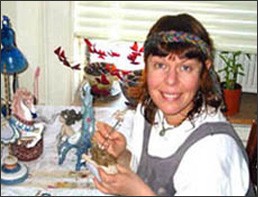Repair vs. Restoration
First, let’s get this out of the way. The difference between repair and restoration. Many people think the words are interchangeable, but they’re not. To repair something means to glue and bond the broken pieces so the damaged item is whole again. This method is also known as partial ceramic restoration. To restore something is to bring an item back to what it was before it got damaged. In other words, to its original condition.
Now let’s talk about your damaged treasures, sentimental heirlooms, and broken ceramics is in this category, naturally, because porcelain is ceramic fired at very high temperatures, which makes it sturdier than low-fired, porous ceramic; true porcelain contains kaolin and has a high ringing sound when tapped with a finger). Whether the damaged item is a pot, plate or vase, it can certainly be restored, no matter what the damage is. In most cases broken ceramics usually start off with a minor crack and gradually progress to bigger cracks that are easily visible to the naked eye.
Ceramic restoration is a straightforward process that involves gluing the pieces back together, sculpting the missing fragments for a perfect fit, and bonding the pieces for conservation . Many undertake this project themselves and others prefer hiring a professional restoration expert. One of the steps involved in the restoration of ceramics would be selecting the correct adhesive. Clear, slow-drying epoxy works the best in mending all fired clay. Before deciding on which glue to use, the type of material you will be working with should be identified first.
Process
Ensuring that the pieces have been cleaned is vital in ceramic restoration. If the item has been fixed before then the old adhesive should be removed in order to ensure that the new one may bind together well. The pieces may need to be “uncooked” (if Gorilla glue or various types of Superglue were used); most of the time, however, the pieces can be cleaned with a mild detergent and warm water.
Using a small brush the chosen adhesive should be applied to the raw and exposed edges. Just enough glue should be spread on as too much will not allow the pieces to bond properly and too little may cause a weak repair job. Hold the pieces together, applying some pressure to help them set. Modeling clay may be used to place the item on, in order to hold it in place as it dries. If an item has been broken into many pieces, it’s imperative to follow the sequence in repairing each piece by piece. Each combined piece should be cured completely before adding on another.
Sometimes in a restoration job the fillers or glue can be seen. If this is not the look you wish to have then you can always touch up the color or design of the item, blending in to cover the glue seams.
Décor touch-ups are also advised when trying to restore a ceramic piece. Oil-based and hard drying paints are most suitable for such a job. Once the design has been re-touched the object should be set out to dry for at least a week.
Ceramic restoration is a great project for DIY enthusiasts. Setting out to complete such a task is quite time-consuming and laborious. However, with the option of expert restoration services on offer, many prefer handing over this task to them. There are a multitude of ceramic restoration companies to be found in today’s market. A simple online search will be able to guide you in finding the best one to suit your needs. The cost of restoring broken ceramics will depend on the type and extent of damage. Most repair jobs are quite affordable and as so many of these pieces have such great sentimental and financial value to them people won’t mind having them restored to their former beauty.


Speak Your Mind